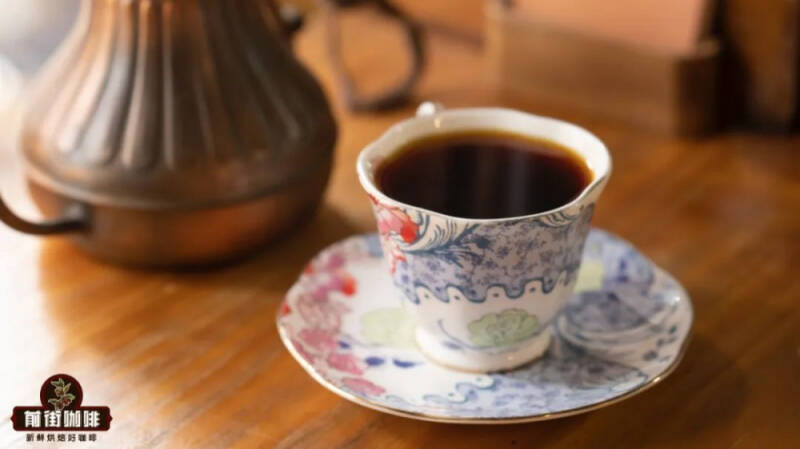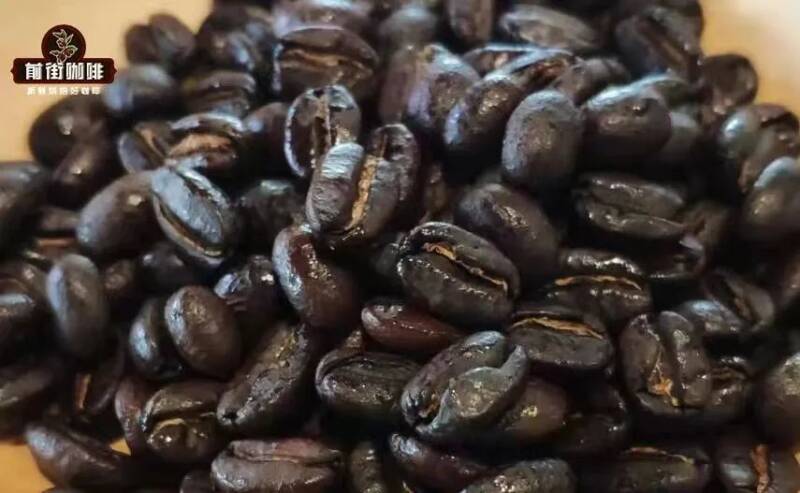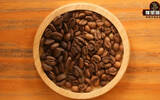Why are all the expensive and good coffees on the market sour? How do Blue Mountain and Rose Summer Coffee iterate? What determines the sourness and bitterness of coffee?
I remember that last year, a well-known blogger went to a coffee shop to experience the sky-high price of hand-made coffee and put on a mask of pain for the first taste of sour coffee. So, for a while, there was talk about sour coffee. Among them, there is such a remark sparked a heated debate: "most of the coffee today is sour!"

There is no denying that sour coffee accounts for a large proportion in today's boutique coffee market. Casually walk into a coffee shop and order a pot of hand-made coffee, and there is a good chance that it will be sour coffee. This makes many friends who still have a bitter impression of coffee confused, although there will be bitter-based coffee, but this only occupies a very small part. Even Italian coffee, which has always been bitter, has begun to move towards sour taste, and has developed a SOE that pays attention to regional flavor. Friends who have read the Qianjie article know that the sour and bitter of coffee is mainly determined by the degree of roasting. The lighter the roast, the more sour the coffee, and the deeper the roast, the more bitter the coffee. In other words, the roasting degree of coffee has changed from deep to shallow. So the question is, why are most of today's coffee sour and lightly roasted?
Why is most of the coffee sour nowadays? Maybe many friends will think that Qianjie is going to say another sentence: since the concept of boutique coffee was released. Good, you guessed right! Although Qianjie wants to say this, it is not only the boutique concept put forward by Ms. Erna Knudsen that promotes the taste of coffee from bitter to sour. This phenomenon is also promoted by a series of factors, such as the changes in the planting of coffee producing areas, the roasting cognition of coffee roasters, the change of the mainstream way of extracting coffee, the taste preference of consumers, and so on. Under the joint action of this series of factors, coffee gradually changed from bitter to sour. So today, Qianjie will focus on these factors as a theme to share how the taste of coffee has changed from stereotyped bitterness to colorful acid step by step!
In the article "how Ethiopians drink coffee", we can see that before the advent of modern roasters, people could only stir-fry coffee beans through cooking utensils in the kitchen if they wanted to cook raw coffee beans. But no matter how to stir-fry, it is difficult to heat the coffee beans evenly in an iron pan. Therefore, in order to avoid entrapment, people at that time would stir-fry the coffee beans until they were nearly carbonized black, as long as they reached this level, there would be no raw beans. In this degree of coffee beans, the oil in the body will spill over the bean surface early because of the excessive expansion of the structure. Therefore, the black beans wrapped in a layer of oil have a special nickname-"black gold".

According to the current roasting theory, this kind of coffee is the state after the end of the second explosion. So we can imagine how bitter it should be! Bitter as it is, the aroma of coffee is very rich. As a result, this kind of coffee gradually has an audience, and people's initial impression of the taste of coffee is gradually formed. With the progress of the times, coffee beans began to have their own roasting machine. First the birth of the drum roaster, and then the semi-hot air drum roaster. Although the baking conditions have improved, the idea of how to roast deeply has been deeply rooted in the hearts of the people over the past few hundred years, so roasting coffee to the second explosion is still the mainstream perception at that time.
In addition, the mainstream extraction methods at that time and the quality of coffee beans were all important factors that made deep-roasted coffee become the mainstream cognition. At the beginning of the 20th century, the second wave of coffee swept the world. Espresso has been widely spread all over the world, driven by Italian immigrants. What is brought out is not only the way espresso is made, but also the idea of using deep-roasted coffee beans. Coupled with the fact that the coffee beans at that time were mainly commodity exports, the overall quality would be relatively poor, with many defects and mixed flavor, so it was necessary to use the scorched and bitter taste brought by deep roasting to cover up these negative flavors. Therefore, under the role of these two, deep-roasted coffee is still the mainstream of the times. Because of this, Blue Mountain Coffee was able to become the king in that era because of its excellent quality.
The coffee industry in Jamaica started around 1750, but it has been in a lukewarm state. Until 1950, Jamaica established the Coffee Industry Committee, which is mainly responsible for the overall management of the blue mountain coffee cultivation, processing, and grading process. As a result, soon, the quality of Blue Mountain Coffee has been improved by flying. At that time, most of the deep-roasted coffee outside the Blue Mountain showed strong and exciting bitterness, only Blue Mountain Coffee, although it was also deeply roasted, but it was bitter but not scorched, strong but not strong, and the taste was extremely clean. In this way, the quality of Blue Mountain Coffee, coupled with the Japanese talent marketing, ascended the throne of coffee emperor. And it is this incident that makes people begin to realize the importance of quality, so coffee ushered in a turning point.
In 1974, Ms. Ernusen released the concept of boutique coffee to emphasize the characteristics of regional flavor to make people realize that the quality management of coffee upstream is also very important. Over the next few years, the quality of coffee beans has greatly improved, which allows coffee roasters to re-examine their roasting ideas! Previously, roasting was greatly limited because of the uneven quality of coffee beans. Long before the concept of boutique coffee was put forward, innovative roasters tried to reduce the roasting degree of coffee beans, so that it was not so deep and bitter. But they soon found that due to the different quality of beans, if the baking stopped before the second explosion of beans, then the pot of coffee beans will be mixed with a lot of raw beans, leading to the astringency of the coffee. Now that this limitation has been broken, coffee beans will soon usher in a new direction of roasting.
The Norwegian region of Europe was the first to break the situation, and since they have not been exposed to coffee for that long, they have not been brainwashed by the concept of bitter coffee. As a result, Nordic baking, which was very "rebellious" and unfashionable at that time, was born. At that time, the "shallow" is actually a moderate baking, but at that time, it was already very shallow. At that time, bean bakers in other countries recognized that this degree of coffee was not ripe, sour, and very sharp! As a result, after tasting this alternative light roasted coffee, guess what!
Don't say a word when drinking! Very rich berry flavor burst out in the mouth, sour and lively, like the sweet and sour taste of fruit juice. This is completely different from people's impression of shallow roasted coffee, which is sharp, sour, rigid and difficult to taste. In early 2003, roasters inspired by Northern Europe published the theory of three waves of evolution of fine coffee at the Coffee Roasters Society in the United States, which is the beginning of the third wave of coffee. This paper focuses on such a thing: in order for coffee to better show its own characteristics, proper baking is very important.
The release of this paper has set off a new trend of coffee roasting in the United States! A number of well-known American cafes are the first to adopt and launch medium-to-light roasted coffee. Although their roasting is not as extreme as the shallow in northern Europe, the coffee is no longer always bitter, and the roasting of coffee begins to diversify. The reason why Rose Summer became famous in 2004, in addition to the blessings of producing areas and bean seed characteristics, the appropriate degree of baking also provided great help! After all, before Rosa became famous, there were a lot of coffee that could emit flower and fruit aromas, but under deep roasting, these flavors were almost masked and few aromas could be captured by taste buds. So in 2004, Rose Summer was able to amaze everyone and reach an unprecedented height.
At this point, the era of sour coffee officially began, in order to make beans better show their own characteristics, people will mostly use shallow roasting to "cook" them. What can best reflect these "special existence" is the way of making individual coffee, in which hand-brewed coffee stands out with the advantages of light, fast and clean. Soon, portable hand-made coffee became popular. The shallow roasted coffee brewed by hand is not only full of flavor, but also very rich in layers. This lowers the drinking threshold of coffee, and some people who can't drink bitterness can accept coffee more easily.
With the culture and atmosphere of boutique coffee getting stronger and stronger, more and more people are affected. As a result, after 2015, boutique cafes dominated by individual items began to grow at an explosive rate. In these coffee shops, sour coffee accounts for the vast majority, so it will make many people outside the coffee shop have the illusion that sour coffee is everywhere! Of course, although most of today's coffee is sour, we can't forget that there are still a lot of coffee on the market, such as Blue Mountain, Manning, Brazil and so on, which are still traditional and roasted in medium and deep depth, so that we can taste the classic delicacies that have been handed down for hundreds of years.
-END-
Front Street Cafe
No. 10 Baoqian street, Yandun road, Dongshankou, Yuexiu district, Guangzhou, Guangdong province
Important Notice :
前街咖啡 FrontStreet Coffee has moved to new addredd:
FrontStreet Coffee Address: 315,Donghua East Road,GuangZhou
Tel:020 38364473
- Prev

Level 2 drought warning! Severe drought in coffee producing areas may push up coffee bean prices further
Recently, in the international coffee market, the prices of both Arabica coffee and Robusta coffee have been rising. The reason is that Vietnam, the world's second largest coffee producer, has suffered severe drought effects, resulting in the country's Robusta coffee production. The reduction in global coffee stocks has also led to a decrease in global coffee stocks. Recently, according to Vietnam's National Water
- Next

What details should I pay attention to when extracting SOE from an espresso machine? How to extract a delicious cup of medium and light baked concentrate?
When you drink too much traditional deep-roasted espresso, you will inevitably want to change your flavor. As a result, most people will replace the deep-roasted blend in the bean warehouse with SOE coffee beans with distinctive flavor, so as to make sour coffee with distinctive flavor. These beans tend to be lightly baked. If we use ginseng extracted from deep-baked beans,
Related
- Why are the coffee in some coffee shops not enough after being frozen? What should I make up for my American latte cappuccino coffee after being frozen?
- How much water does it take to steam coffee by hand? Why is the coffee brewing and steaming time 30 seconds? What is the purpose of steaming coffee?
- The suspected drink contains too much caffeine! Overlord Tea Lady responds urgently!
- Starbucks rejects antique paper coupons?! Netizen: Missed marketing opportunities!
- What ratio of water temperature and ground does the smart cup method use to press coffee? The difference between brewed coffee and filtered coffee?
- What is the standard process for the purpose of coffee cup testing? What is the difference between hand-brewed coffee and cup testing?
- How to use hand-brewed coffee paragon small golden balls? How does cold coffee lock in the aroma of coffee?
- Is American coffee black? What is the difference between American coffee and drip coffee?
- Unexpected! Well-known tea beverage brand Lele Tea will withdraw from the Zhengzhou market!
- Starbucks enters the fashion and beauty industry?! Netizen: Give me an ice American eye cream

